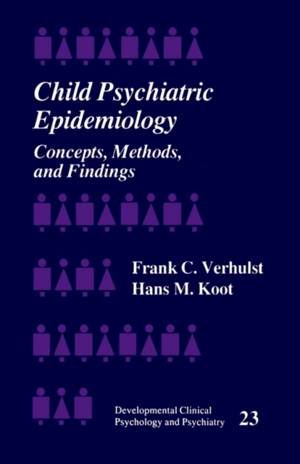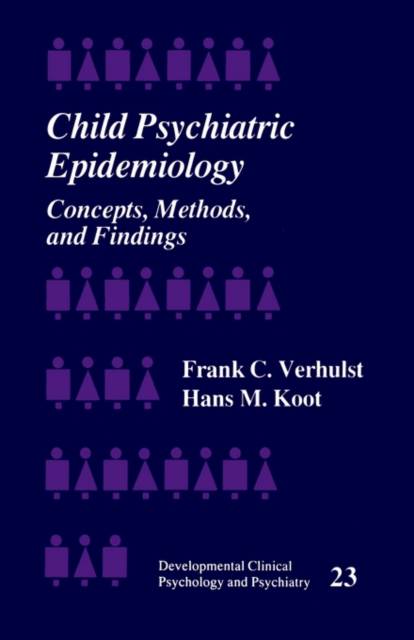
- Retrait gratuit dans votre magasin Club
- 7.000.000 titres dans notre catalogue
- Payer en toute sécurité
- Toujours un magasin près de chez vous
- Retrait gratuit dans votre magasin Club
- 7.000.0000 titres dans notre catalogue
- Payer en toute sécurité
- Toujours un magasin près de chez vous
160,45 €
+ 320 points
Format
Description
If you′re looking for a concise resource that examines child psychiatric epidemiology, then look no further. In this excellent volume, Verhulst and Koot answer a wide variety of questions pertaining to the etiology, the course, and therapy of child psychiatric conditions. Central issues related to diagnosis, assessment, sampling, and cross-cultural studies are presented in a highly readable fashion. Research on prevalence and patterns of childhood dysfunction and how these are influenced by such factors as age, sex, and social class are examined in detail. Verhulst and Koot also provide a detailed description of community surveys and offer a referral pathway to psychiatric care for children. Child Psychiatric Epidemiology provides critical, epidemiological concepts, designs, and information for psychiatrists, psychologists, researchers, health care providers and students. "This must be one of the most intelligent books a child psychiatrist has a chance and a reason to read. In fact, it is a book which anyone with an interest in the epidemiology of mental phenomena, whether these relate to children or not, should read. . . . The book packs a far bigger punch than its 140 odd pages would suggest. There is always enough substance to bit into, and its style is didactic, critical, and analytical; the material is dissected rather than presented. The reader is guided through concepts, research designs, definitions of caseness, tools, sampling methods, with examples and demonstrations from all the major epidemiological child psychiatric studies, at a very satisfying depth. Finally, its price makes it one the best value reads in years." --British Journal of Psychiatry "This well-written book provides an overview of epidemiologic approaches in the field of child pyschopathology. . . . The authors model the processes of critical thinking and scholarly critique in an elegant manner. Stimulating questions are raised regarding the validity and applicability of various approaches or conceptualizations in child psychopathology. Citations of key references and studies in the field represent an excellent resource for new researchers. The use of actual studies to exemplify concepts and methods brings the content alive." --Child Development Abstracts & Bibliography "Provides an excellent introduction to a complex and important issue that is conflictual. . . . All professionals who either generate or pursue policies relating to child abuse and those who make decisions about resources and disposition of individual cases should know the contents of this book." --Issues in Child Abuse Accusations
Spécifications
Parties prenantes
- Auteur(s) :
- Editeur:
Contenu
- Nombre de pages :
- 158
- Langue:
- Anglais
- Collection :
- Tome:
- n° 23
Caractéristiques
- EAN:
- 9780803939974
- Date de parution :
- 15-10-91
- Format:
- Livre broché
- Format numérique:
- Trade paperback (VS)
- Dimensions :
- 138 mm x 218 mm
- Poids :
- 235 g

Les avis
Nous publions uniquement les avis qui respectent les conditions requises. Consultez nos conditions pour les avis.






